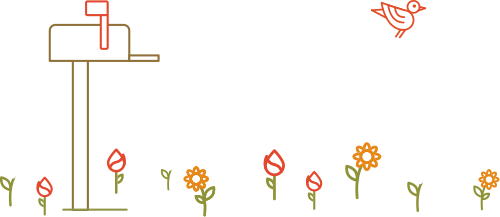
The 4-Hour Chef
In my humble opinion, there are few things on this earth that improve your life (not to mention your physique) more than learning to cook.
Like most urban kids in the late 20th century, I grew up thinking that “cooking” meant heating frozen lasagna or adding orange powder and butter to tubular noodles. Heating food is hardly the same as cooking, but even if you love Kraft’s neon version of Mac N’ Cheese, if this is where your culinary adventures end you’re selling yourself sadly short.
That said, by no stretch of the imagination do I consider myself a chef. The most common request I get from readers is for more recipes. But while I am touched by the overwhelming positive responses to my roasted cauliflower and delicata squash dishes (both ultra-simple kitchen homeruns), it has been difficult for me to provide more detailed cooking instructions on a regular basis.
The reason for this is that I almost never use recipes myself. I find them constraining, which means they generate a certain amount of stress for me—not dissimilar from the feelings I had running experiments in the lab (you can keep your frozen aliquots of DNAse, thanks). It’s slightly comforting knowing I could cook by the book if I had to. But the reality is I have more fun being creative with the ingredients I have at the moment, sort of winging it as I go.
The result of this method is that while I often eat delicious food, I rarely cook exactly the same thing twice, which does not make for reliable recipe development. If I do share a recipe here on the blog, it is usually because I’ve found a simple technique to make an ingredient taste lightyears better than it had ever turned out on accident with my random kitchen hacking methods. These are discoveries I think will change your life, and I am very confident you can reproduce.
Of course when I first started cooking I was not proficient enough to be so whimsical. It took years of kitchen experiments and more than a few screw-ups to get to a place where most of the things I cook at home are edible. This skill level (nothing particularly impressive, but head and shoulders above most open-heat-serve American dinners) is the minimum you should strive for if you’re serious about optimizing your healthstyle.
Enter: The 4-Hour Chef. Despite the cooking theme, this is not a cookbook. Think of it more as a cooking class, where each recipe is designed to teach a skill (e.g. braising, sautéing, knife skills, etc.) and every subsequent recipe builds upon those of the last. The idea is to teach the principles of cooking, so that after finishing the book you can tackle any recipe you come across and, more important, have the skills to improvise on your own.
If you’ve struggled with cooking in the past, this alone is enough of a reason to pick up the book. Not only will it ensure that you have the essentials under your belt, it’ll also give you a few crowd-pleasers to dazzle dates and parents alike. But the fun doesn’t stop there.
The 4-Hour Chef is divided into five main parts: Meta-Learning, The Domestic, The Wild, The Scientist, and The Professional. For those familiar with Tim Ferriss‘ previous work, these subdivisions make perfect sense. If not, here’s a quick rundown:
Tim* is a bit of a self-made savant, and has built his career on starting as a no-name, know-nothing then transforming himself into a world-class _(fill in the blank) . The “blank” for Tim has included holding a world record in tango, being a champion Chinese kickboxer, #1 best-selling author, etc. The full list of Tim’s accomplishments is astounding. As such he’s developed a reputation for learning things incredibly quickly, unusually and effectively. In The 4-Hour Chef he unveils the secrets of this “meta-learning” using cooking (a skill he’d always struggled with) as an example.
At first glance I was most excited about the Meta-Learning, Domestic and Scientist sections (go figure), and I was not disappointed. In “Meta” he breaks down the basics of deconstructing problems (e.g. language learning, tango, swimming, tasting, launching companies, etc.) and solving them in the most effective way possible. (It also includes how to say “I must eat” in 9 different languages. Win.). Long-time Ferriss fans will love this section.
Despite having a decent idea of how to navigate a kitchen, I learned a lot from the “Dom” section as well, and found its instructions far more logical than most introduction cookbooks. He focuses on transferable skills, like learning to “eyeball” measurements (while clarifying when you need to be exact) and knowing when something is “done.” There are also dozens of little tips and tricks that’ll instantly skyrocket your kitchen confidence, which is half the battle of sticking with it. Though I didn’t cook my way through the lesson plan (I’ve only had the book for a few days), it seemed highly approachable and even a little fun. The first day you’ll learn to make osso “buko” without ever touching a knife.
The “Sci” section wasn’t at all what I expected (come to think of it, I have no idea what I expected—I just like science). It turned out to be a crash course in molecular gastronomy, which left me a bit crestfallen at first. While I love eating at fancy restaurants that serve elegant foams and spherical droplets of surprising flavors, I’ve never had any desire to recreate these things at home; some things are best left to the professionals. But the second I saw his “Crunchy Bloody Mary” recipe where chipotle infused vodka and bloody mary mix is transformed into a gel used to fill mini celery sticks, I had a change of heart. Reading the science behind all the culinary magic of restaurants like Alinea and El Bulli is fascinating, and I picked up a few parlor tricks to impress my friends. This section is a great way to feed your inner food geek.
I didn’t expect to be as impressed with the “Wild” section. Catching city pigeons in the park with my bare hands? Thanks, but no thanks. Yet sure enough, I was roped in after a few pages. The recent devastation of Hurricane Sandy really drove home the importance of this section. Though he dives deeper into shelter building and arrow carving than I probably need (Tim may beg to differ), this section is an excellent lesson on the value of life, the importance of life skills, and even a few things you’ll use on a more regular basis, like quartering a chicken. To my surprise, I found myself enthralled by the details of cooking a squirrel over a fire and removing pigeon (aka squab) breasts from a whole bird (feathers and all) with bare hands. Yum.
The “Pro” section was another surprise. As I’ve said, I’ve never aspired to cook like a pro at home. I just want simple, tasty food. And the quicker the better. But this section is essential for transferring the skills from the rest of the book into things you can use in the real world. It also covers some essential “classic” dishes, like roasted chicken, that weren’t covered in the “Dom” section. Most important, this section teaches you the basics of kitchen creativity, and how to branch out and improvise on your own using the techniques from the earlier sections.
The 4-Hour Chef is an incredibly ambitious book, but it is clear from the beginning that the goal is always to simplify and distill the essence of any task to its basic elements. It teaches the principles of cooking (and learning in general), not one-off recipes that you may or may not get around to making. I anticipate using it for years as a reference, whether it’s to find restaurant recommendations in NYC or as a reminder of the essential few ingredients that define a specific ethnic cuisine. I’ve flagged dozens of pages to revisit in the future.
On that note, I’d highly recommend getting the hardcover if you plan to buy it. I have both the print copy and the Kindle version, and while the latter will certainly suffice (and is much lighter, if that’s an issue for you) you really miss out on the beautiful design and experience of the printed book. That said, both the print ($21.00) and the Kindle versions ($4.99) are on sale right now, so you can get both for less than the price of one originally priced hard copy ($35).
Lastly, I also love that Tim revisits life philosophies in this book, which I loved in The 4-Hour Work Week, but missed in The 4-Hour Body. The 4-Hour Chef touches on several invaluable life lessons, including why it is important to not waste food (especially if it comes from an animal), and how cooking is a path that brings you closer to love and life. Feeding ourselves is one of our most basic human needs, and is at the root of our life, our culture and ultimately our happiness.
Bon appetit!
*Full disclosure: As many of you know, Tim is a friend. He even included a jumbotron shot of me stuffing my face in the first few pages of the book. Hence my using his first name in this review and not his surname, which is more conventional in journalism. That said, he did not ask me to write this review, nor am I being compensated in any way for writing it (unless you count the $0.20 Amazon affiliate commission I’d get from reviewing any book in their inventory—blogging isn’t particularly profitable). The truth is I would have reviewed The 4-Hour Chef whether I knew Tim or not (I was a fan before we were friends, The 4-Hour Work Week changed my life), because I knew it had the potential to be particularly valuable to you (my readers). You may think you want more recipes, but what you really want is to feed yourself well in as many ways as possible. This book is the equivalent of teaching you to fish, rather than giving you fish. If you still have conflict of interest concerns, feel free to voice them in the comments. Just keep in mind that nothing trumps trust on the internet and I’ve spent years working to gain yours. As much as I like Tim, I’d be an idiot to jeopardize that.




 Health
Health Habits
Habits Food
Food Weight
Weight 



 Better Than Butternut: Roasted Delicata Squash Recipe
Better Than Butternut: Roasted Delicata Squash Recipe 10 Simple Ways To Eat Less Without Noticing
10 Simple Ways To Eat Less Without Noticing Juicing: Stupid and Pretentious or Nourishing and Enlightening?
Juicing: Stupid and Pretentious or Nourishing and Enlightening? 10 Tasty Carbs That Won’t Make You Fat
10 Tasty Carbs That Won’t Make You Fat How To Start Working Out When You Don’t Like To Exercise
How To Start Working Out When You Don’t Like To Exercise
 Focus More on Your Brain and Less on Your Diet if You’re Serious About Losing Weight
Focus More on Your Brain and Less on Your Diet if You’re Serious About Losing Weight Home Court Habits: The Secret to Effortless Weight Control
Home Court Habits: The Secret to Effortless Weight Control 10 Reasons You Aren’t Losing Weight When You Think You’re Doing Everything Right
10 Reasons You Aren’t Losing Weight When You Think You’re Doing Everything Right How To Burn More Calories Without Breaking A Sweat
How To Burn More Calories Without Breaking A Sweat The 7 Habits of Highly Effective Foodists
The 7 Habits of Highly Effective Foodists










 Good Calories, Bad Calories
Good Calories, Bad Calories






